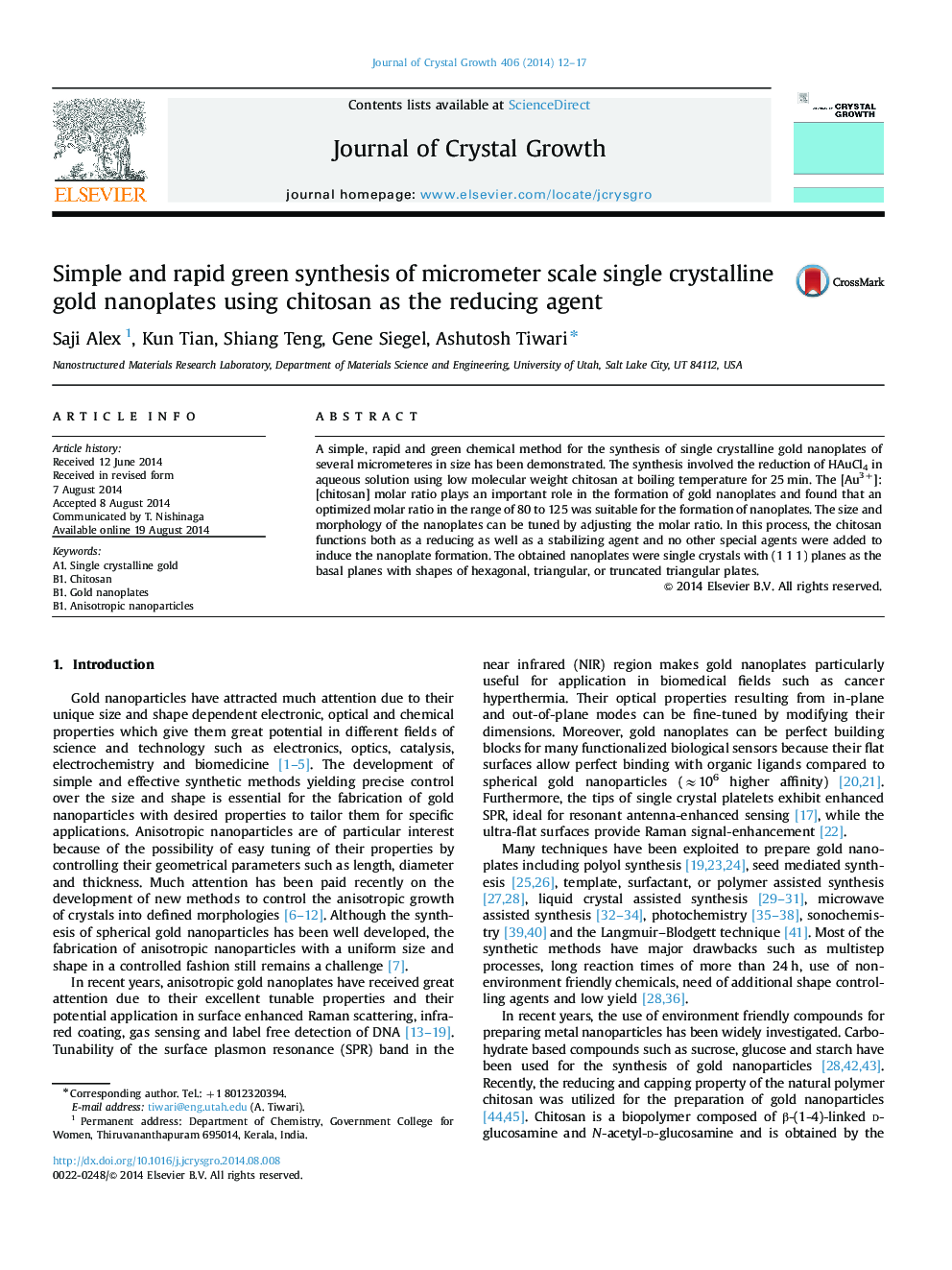| Article ID | Journal | Published Year | Pages | File Type |
|---|---|---|---|---|
| 1790278 | Journal of Crystal Growth | 2014 | 6 Pages |
•Single crystalline gold nanoplates were synthesized in aqueous solution.•A natural polymer, chitosan, is used as the reducing and capping agent.•Molar ratio of the reagents plays a major role in the formation of the nanoplates.•Nanoplates were mainly hexagonal with width around 10 μm.
A simple, rapid and green chemical method for the synthesis of single crystalline gold nanoplates of several micrometeres in size has been demonstrated. The synthesis involved the reduction of HAuCl4 in aqueous solution using low molecular weight chitosan at boiling temperature for 25 min. The [Au3+]:[chitosan] molar ratio plays an important role in the formation of gold nanoplates and found that an optimized molar ratio in the range of 80 to 125 was suitable for the formation of nanoplates. The size and morphology of the nanoplates can be tuned by adjusting the molar ratio. In this process, the chitosan functions both as a reducing as well as a stabilizing agent and no other special agents were added to induce the nanoplate formation. The obtained nanoplates were single crystals with (1 1 1) planes as the basal planes with shapes of hexagonal, triangular, or truncated triangular plates.
